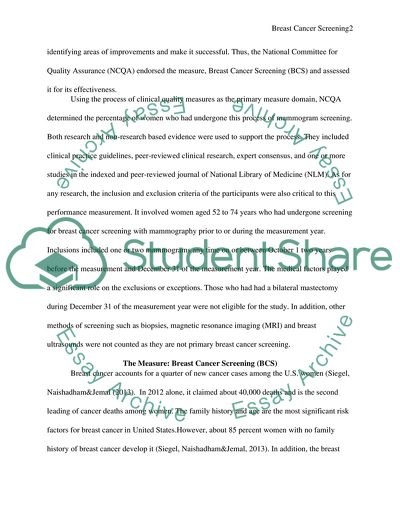Cite this document
(Breast Cancer Screening Research Paper Example | Topics and Well Written Essays - 2000 words, n.d.)
Breast Cancer Screening Research Paper Example | Topics and Well Written Essays - 2000 words. Retrieved from https://studentshare.org/health-sciences-medicine/1857762-breast-cancer-screening-for-women-ages-50-to-74-quality-assurance-paper
Breast Cancer Screening Research Paper Example | Topics and Well Written Essays - 2000 words. Retrieved from https://studentshare.org/health-sciences-medicine/1857762-breast-cancer-screening-for-women-ages-50-to-74-quality-assurance-paper
(Breast Cancer Screening Research Paper Example | Topics and Well Written Essays - 2000 Words)
Breast Cancer Screening Research Paper Example | Topics and Well Written Essays - 2000 Words. https://studentshare.org/health-sciences-medicine/1857762-breast-cancer-screening-for-women-ages-50-to-74-quality-assurance-paper.
Breast Cancer Screening Research Paper Example | Topics and Well Written Essays - 2000 Words. https://studentshare.org/health-sciences-medicine/1857762-breast-cancer-screening-for-women-ages-50-to-74-quality-assurance-paper.
“Breast Cancer Screening Research Paper Example | Topics and Well Written Essays - 2000 Words”, n.d. https://studentshare.org/health-sciences-medicine/1857762-breast-cancer-screening-for-women-ages-50-to-74-quality-assurance-paper.


